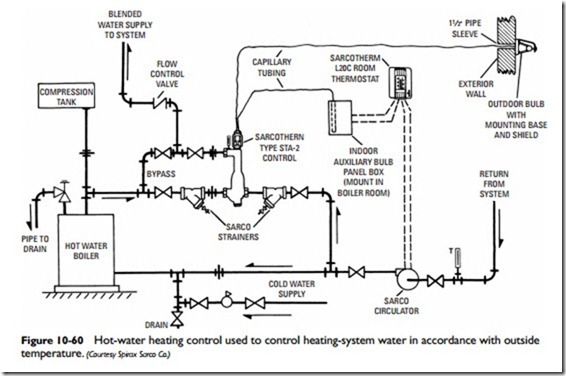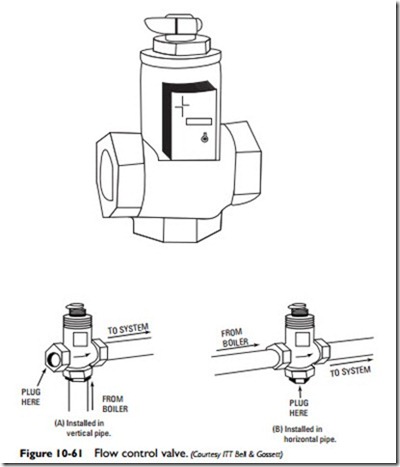Electric Zone Valve
Some hydronic heating systems use electrically operated valves to control the flow of water into each zone. In these zoned hydronic systems, the valves operate in conjunction with a single circulator. The construction details of a typical electric zone valve are illustrated in Figure 10-62.
When the room thermostat calls for heat, an electrical current is sent to the valve operator. The current flows through a normally closed switch and around a coil called a heat motor. The heat created in the heat motor causes a piston to move out and push against a spring-loaded lever that normally holds the valve closed. This action opens the zone valve. At the same time, the piston extends a bit further and trips an end switch that sends a signal through a relay back to the circulator, turning it on and sending water into the zone. The piston extends a bit further and reverses the sequence. This in-and-out movement of the valve piston will continue for as long as the room thermostat calls for heat.

